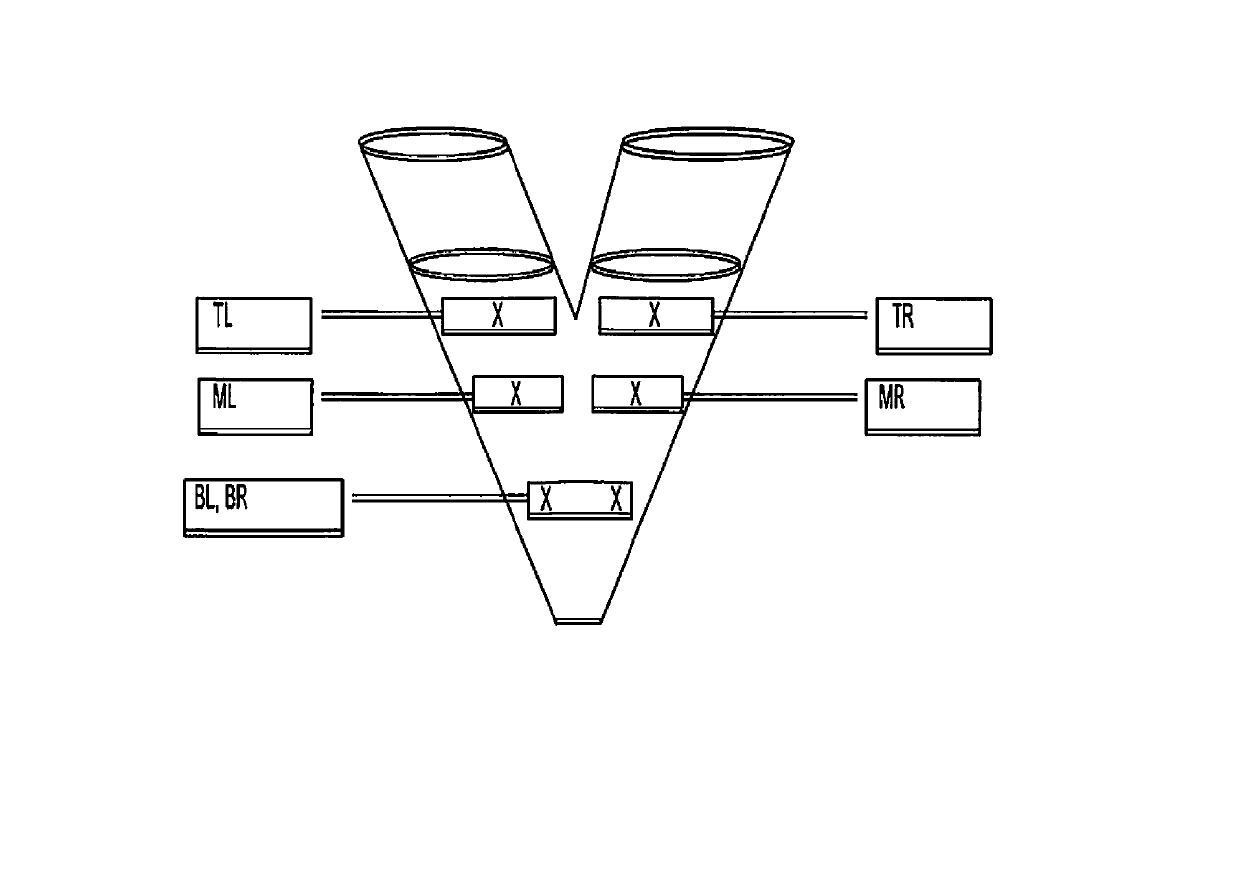Corticosteroid containing orally disintegrating tablet compositions for eosinophilic esophagitis
a corticosteroid and composition technology, applied in the field of eosinophilic esophagitis corticosteroid compositions orally administered low dose, can solve the problems of no topically administered anti-inflammatory medications approved, delayed treatment of patients, and difficulty in swallowing, so as to achieve high content uniformity of finished dosage units, avoid high, and high blend uniformity/homogeneity
- Summary
- Abstract
- Description
- Claims
- Application Information
AI Technical Summary
Benefits of technology
Problems solved by technology
Method used
Image
Examples
example 1
ispersing Microgranules
[0092]Rapidly dispersing microgranules are prepared following the procedure disclosed in US Patent Application Publication No. U.S. 2003 / 0215500 published Nov. 20, 2003, the contents of which are hereby incorporated by reference in its entirety for all purposes. Specifically, D-mannitol (152 kg) with an average particle size of approximately 20 μm or less (PEARLITOL® 25 from Roquette, France) is blended with 8 kg of cross-linked povidone (Crospovidone® XL-10 from ISP) in a high shear granulator (GMX 600 from Vector), granulated with purified water (approximately 32 kg), wet-milled using a Comil from Quadro, and finally tray-dried to provide microgranules having an LOD (loss on drying) of less than about 1.0%. Alternatively, the wet milled granules are dried in a fluid-bed dryer to provide microgranules having an LOD of less than 1.0% by weight. The dried granules are sieved and oversize material is again milled to produce rapidly dispersing microgranules with ...
example 2
paration by High Shear Process for 1.5 mg Fluticasone ODT; Batch 1
[0094]A preblend 1 is first prepared by blending one quarter of silicified microcrystalline cellulose (SMCC commercially available as PROSOLV® HD90), micronized fluticasone propionate, colloidal silicon dioxide, and another quarter of SMCC in a 1 quart V-blender for 10±1 minutes (see Table 1 for weights of individual components of compressible blends of ODTs, 1.5 and 3 mg). A second preblend (preblend 2) is prepared: 10 L granulation bowl of a high shear granulator, PMA 1 is charged with spray-dried mannitol (PARTECK® M200), preblend 1, remaining half of SMCC, crospovidone and sucralose powder, Blending is performed for 10±1 minutes at an impeller speed, of 300±50 rpm and a chopper speed of 1500±50 rpm to produce preblend 2. One half of rapidly dispersing microgranules, sodium stearyl fumarate, preblend 2 and the remaining half of rapidly dispersing microgranules are blended in a 8 qt V-shell blender and sampled for b...
example 3
eparation by Repeated Blending and Milling for 1.5 and 3 mg Fluticasone ODT; Batch 2, 3, 5
[0096]A preblend 1 (see Table 1 for weights of individual components of compressible blends of ODTs, 1.5 and 3 mg) is prepared by charging a 2 quart V-blender sequentially with half of SMCC, micronized fluticasone propionate, colloidal silicon dioxide and the remaining half of SMCC and blending for 10±1 minutes. The preblend 1 is passed through a QUADRO Comil fitted with a 024R screen (30 mesh opening) at approximately 2400±100 rpm. Preblend 2 is prepared: half of spray-dried mannitol, milled preblend 1, crospovidone, and sucralose powder are blended in a 4 quart V-blender for 10±1 minutes and milled through the 024R screen. The Comil is rinsed by passing the remaining half of spray-dried mannitol through a 024R screen. Half of rapidly dispersing microgranules, sodium stearyl fumarate, milled preblend 1, rinsed mannitol and the remaining half of rapidly dispersing granules are blended and sampl...
PUM
| Property | Measurement | Unit |
|---|---|---|
| disintegration time | aaaaa | aaaaa |
| particle size | aaaaa | aaaaa |
| mean particle size | aaaaa | aaaaa |
Abstract
Description
Claims
Application Information
 Login to View More
Login to View More - R&D
- Intellectual Property
- Life Sciences
- Materials
- Tech Scout
- Unparalleled Data Quality
- Higher Quality Content
- 60% Fewer Hallucinations
Browse by: Latest US Patents, China's latest patents, Technical Efficacy Thesaurus, Application Domain, Technology Topic, Popular Technical Reports.
© 2025 PatSnap. All rights reserved.Legal|Privacy policy|Modern Slavery Act Transparency Statement|Sitemap|About US| Contact US: help@patsnap.com

